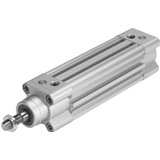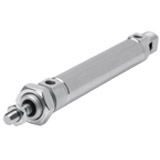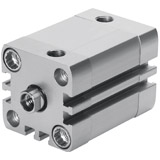Pneumatic cylinder identification can be troublesome for many reasons, some of the most common reasons a cylinder cannot be identified maybe:
|
Part number identification has been removed or ineligible.
|
- Ardous conditions can erode cylinder identification labels.
- Identification label was removed during production by the machine manufacturer.
|
|
The cylinder is no longer available
|
- The manufacturer has discontinued the cylinder.
- The manufacturer of the cylinder is not available in your country.
|
With no part number or identification information on your cylinder, the replacement process has now got a little more complicated than first planned. Pneumatic cylinder identification is one of the most commonly asked questions to our technical support team, and we regularly undertake site visits or are emailed pictures and dimensions to assist with identification.
On most occasions, there is usually more than one manufacturer of a pneumatic cylinder that can be interchanged with the faulty cylinder. The problem arises with identifying what type and size of cylinder are required.
Our pneumatic cylinder identification tool has been developed to assist with the identification of the most common types of pneumatic cylinders, all that is required is a few simple measurements and the use of our pneumatic cylinder identification tool.
Most pneumatic cylinder manufacturers have a cylinder range according to one of three international standards; ISO15552:2018, ISO6432:2015 and ISO21287:2004. The international standards were created to enable manufacturers of pneumatic cylinders to work to a joint standard for pneumatic cylinder design. Each standard establishes a set of metrics for basic measurements for cylinders, mounting methods and their accessories. The three different standards apply to a different type of cylinder design:
- ISO 15552 Standard Cylinders
- ISO 6432 Round Cylinders
- ISO 21287 Compact Cylinders
Each type of cylinder has its features and benefits that make them suitable for an application. Most manufacturers also have many cylinder types that adhere to the same standard as they can utilise different materials and design features to make them suitable for a particular environment or application. For example Camozzi have a Series 24 round cylinder according to the ISO 6432 standard; however, they also have a Series 94 that is ISO 6432 compliant but is manufactured from stainless steel for environments that require this material such as the food and beverage industries.
We have put together some more in-depth information on each international standard for each pneumatic cylinder type here:



